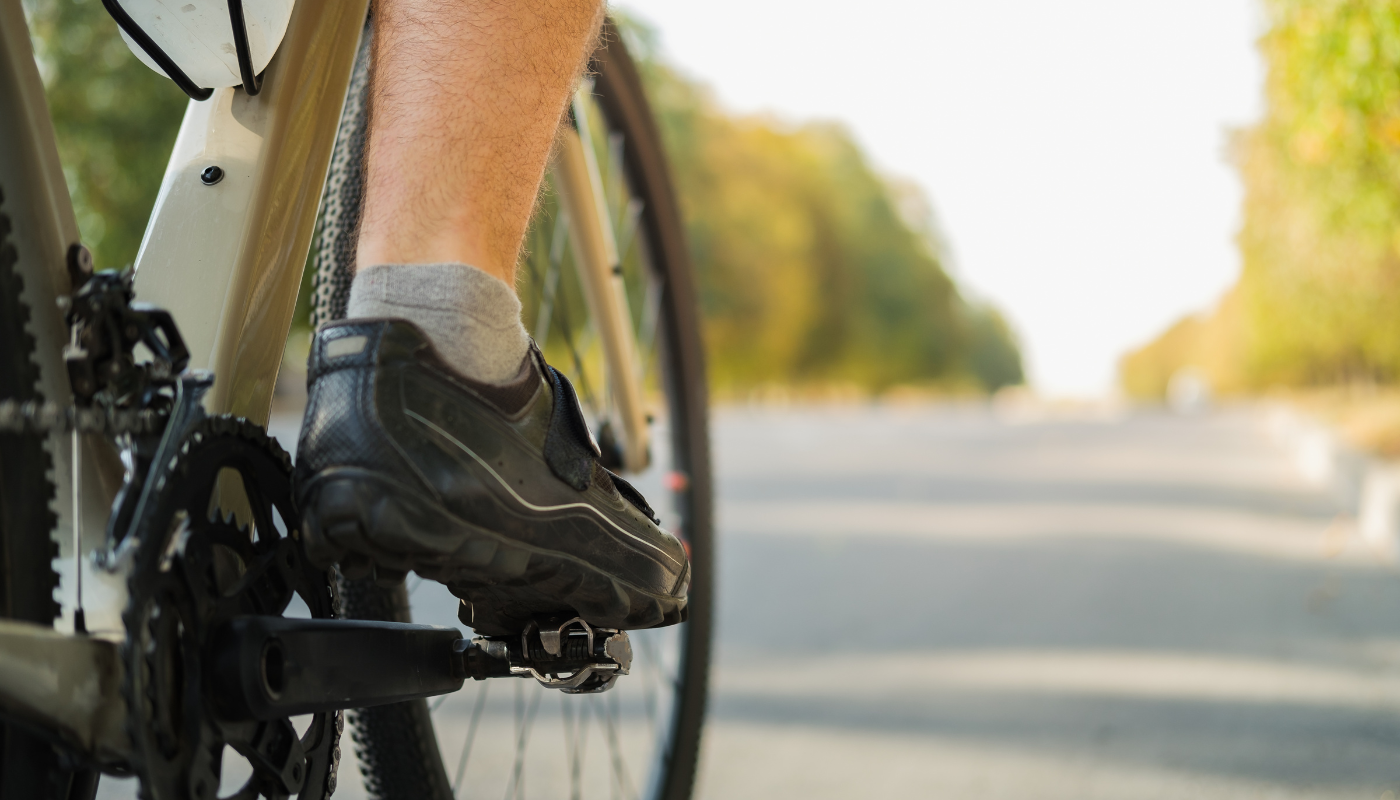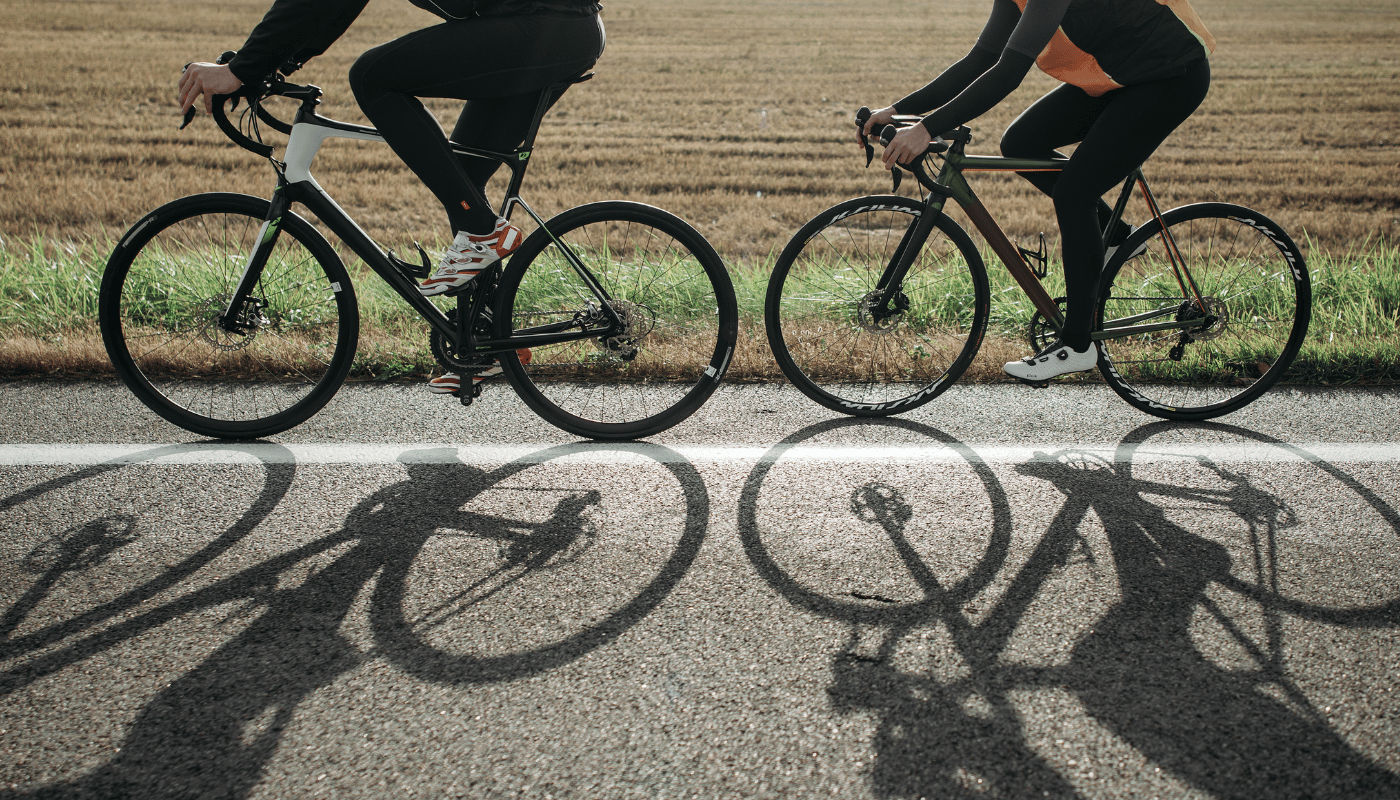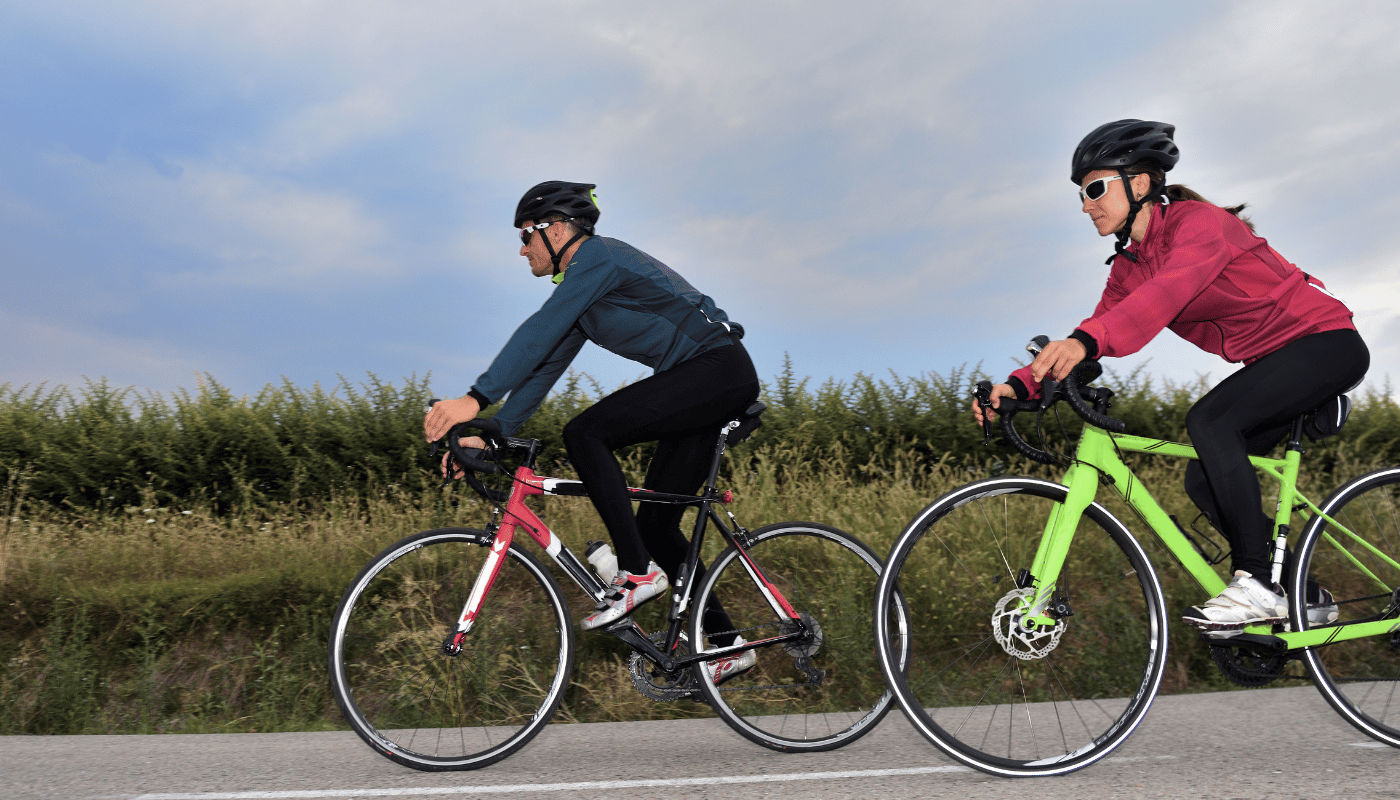Wondering how long your cycling shoes can withstand the rigors of your rides? Whether you’re a casual rider or a competitive cyclist, the longevity of your cycling shoes is crucial for performance and comfort. This article delves into the factors that determine how long your cycling shoes will last, offering insights and tips to maximize their lifespan. Keep reading to discover how to get the most out of your cycling footwear investment.
Factors Influencing Cycling Shoe Longevity
The lifespan of cycling shoes can be significantly affected by various factors, encompassing the frequency of use, the type of cycling, and the quality of care they receive. One of the primary determinants is the material from which the shoes are made. High-quality materials tend to withstand the rigors of cycling better, offering greater durability over time. Another crucial factor is the environment in which the shoes are used. Harsh conditions, such as mud, rain, and extreme temperatures, can accelerate wear and tear, thereby shortening the shoes’ lifespan.
Maintenance plays a key role in extending the life of cycling shoes. Regular cleaning and proper storage can prevent the breakdown of materials and keep the shoes in good condition. Additionally, how often to replace cycling shoes depends not only on visual wear and tear but also on the loss of structural integrity, such as the stiffness of the sole or the snugness of the fit, which can impact performance and comfort. Therefore, paying attention to these signs is crucial for timely replacement and maintaining optimal cycling efficiency.
Understanding the Impact of Usage Patterns on Cycling Shoe Wear
The frequency and intensity of rides also significantly influence cycling shoe longevity. Intensive usage, such as competitive racing or long-distance touring, subjects shoes to greater stress, potentially leading to quicker degradation. Conversely, casual cyclists might find their shoes lasting longer due to less severe usage conditions. Recognizing and acknowledging how these factors interplay can guide cyclists in making informed decisions about when to replace their gear, ensuring that they always have the support and performance they need from their shoes.
Delving Into the Significance of Material and Construction Quality
When contemplating the durability of cycling shoes, understanding the pivotal role of material and construction quality cannot be overstated. Shoes designed with robust materials and advanced construction techniques can offer enhanced resistance to wear and tear, standing up better to the demands of rigorous cycling activities. This insight underscores the importance of considering these elements when purchasing cycling shoes, as they are integral to achieving both high performance and long-term usability.
- Material quality
- Type of cycling
- Environmental conditions
- Maintenance and care
- Usage frequency and intensity
Unveiling the Durability Secrets of Cycling Shoes
The lifespan of cycling shoes can significantly vary, influenced by a multitude of factors such as the frequency of use, maintenance level, and the quality of construction. Typically, a well-made pair of cycling shoes can last anywhere from one to several years, depending on how rigorously they are used. For the casual rider, shoes might only need to be replaced every few years, whereas competitive cyclists might find themselves looking for a new pair every season due to the higher stress and wear they put their gear through.
Maintenance plays a crucial role in extending the life of your cycling shoes. Regular cleaning and proper storage can prevent the breakdown of materials and keep the shoes in good condition for longer. However, no amount of care can completely prevent the eventual wear and tear that comes with the territory. The soles of the shoes, for example, are subject to constant pressure and friction, which over time can lead to a decrease in performance and comfort. Similarly, the upper part of the shoe, though often more durable, can also degrade, particularly in areas subject to repeated stress or where excessive moisture is present.
Knowing when to replace cycling shoes is key to maintaining performance and comfort. Signs of wear such as loose fittings, noticeable discomfort, or diminished power transfer are clear indicators that it’s time for a new pair. Additionally, how tight should cycling shoes be is a common question among cyclists. They should fit snugly without causing any discomfort or pressure points. A shoe that’s too tight can lead to circulation problems and numbness, while a shoe that’s too loose can result in blisters and inefficient power transfer. Ultimately, the right fit will support the best performance and the longest possible use of your cycling shoes.
Maximizing the Life of Your Cycling Shoes
Additional insights into prolonging the life of cycling shoes include paying attention to the cleats and insoles, which are often the first components to show signs of wear. Replacing these parts when necessary can vastly extend the overall usability of the shoes. Moreover, alternating between two pairs of shoes, if possible, can allow each pair adequate time to air out and recover from each use, further extending their lifespan.
Considering the Environmental Impact of Cycling Shoes
While the focus is often on performance and comfort, considering the environmental impact of cycling shoes is also important. Opting for brands that use sustainable materials and offer recycling programs for used shoes can contribute to a more sustainable cycling practice. Ultimately, the choice of cycling shoes should balance performance, durability, and environmental responsibility.
- Regularly clean and dry your cycling shoes to prevent the buildup of moisture and bacteria.
- Inspect and replace worn cleats to maintain efficient power transfer and reduce the risk of injury.
- Use shoe covers in wet or muddy conditions to protect the exterior materials of your cycling shoes.
- Store your cycling shoes in a cool, dry place away from direct sunlight to prevent material degradation.
- Consider the use of custom insoles for a better fit and extended shoe life.
Types of Cycling Shoes and Durability
The durability of cycling shoes largely depends on their type, usage, and material quality. Road cycling shoes, made for speed and efficiency, often feature lightweight construction and stiff soles for optimal power transfer. While this design enhances performance, it can also lead to quicker wear and tear, especially if used frequently on rough roads. On the other hand, mountain biking shoes are constructed with durability and resistance in mind, equipped with rugged soles and more robust materials to withstand harsh trails and conditions. Commuter or casual cycling shoes offer a balance between performance and durability, designed for comfort and practicality with slightly more flexible soles and reinforced areas prone to wear.
Moreover, the material of cycling shoes significantly affects their lifespan. Shoes made with high-quality leather or synthetic materials tend to last longer but may require a higher initial investment. In contrast, cheaper materials can lead to faster degradation and ultimately, a shorter life span. Proper maintenance, including regular cleaning and appropriate storage, can greatly extend the durability of cycling shoes, regardless of their type. It’s also worth noting that the sole type (carbon, plastic, composite) plays a crucial role in both performance and longevity, with carbon soles generally offering the best durability and power transfer.
Factors Influencing Cycling Shoe Durability
Several factors contribute to the durability of cycling shoes, including usage frequency, riding conditions, and maintenance practices. High-intensity or daily riders might find their shoes wear out faster than casual or weekend cyclists. Exposure to mud, rain, and extreme conditions without proper care can also shorten the life of cycling shoes. Regular cleaning, drying, and checking for signs of wear can help in identifying when it’s time for a replacement, ensuring both safety and optimal performance on the road or trail.
- Road Cycling Shoes: Lightweight and stiff for speed, but less durable on rough surfaces.
- Mountain Biking Shoes: Built for durability with rugged soles, ideal for off-road conditions.
- Commuter Shoes: A balance between performance and durability, suitable for everyday use.
- Material Quality: High-quality materials can enhance shoe longevity.
- Maintenance Practices: Proper care extends the life of cycling shoes.
Signs of Wear and Replacement Timing
Understanding when to replace your cycling shoes can significantly impact your riding experience and performance. Generally, the lifespan of cycling shoes can vary based on their quality, how often they are used, and the conditions in which they’re ridden. However, there are clear signs of wear and timing for replacement that are crucial for maintaining optimal performance and foot health.
One of the first signs that it’s time to consider new cycling shoes is visible wear on the sole. The sole of a cycling shoe plays a crucial role in power transfer from your legs to the bike. If the soles are worn out, you may start to notice a decrease in efficiency during your rides. Furthermore, if the cleats are significantly worn or damaged, they may not engage securely with the pedals, posing a safety risk. It’s also important to pay attention to the upper part of the shoe. Materials that are stretched, torn, or generally deformed can compromise the fit, leading to discomfort or even injury over time. Another key indicator is the condition of the fastening system, whether it’s Velcro, laces, or a dial system. If these elements do not provide a snug and secure fit, it may be time to replace your shoes.
Comfort is another vital aspect to consider. If your shoes start to feel uncomfortable or you experience new or increased foot pain during or after rides, this might indicate that the shoes are no longer providing the necessary support. This discomfort can result from breakdowns in the shoe’s interior padding or structural deformities.
Further Insights on Wear and Replacement
While the above signs are clear indicators that your cycling shoes may need to be replaced, it’s also beneficial to preemptively assess their condition based on usage. High-mileage riders or those frequently riding in harsh conditions may need to replace their shoes more often than casual cyclists. A proactive approach in checking the wear on your shoes can prevent unexpected failures during rides and ensure continuous comfort and performance.
In addition to the visible and tactile signs of wear, consider the shoe’s age. Even with minimal signs of external wear, materials in the shoe can degrade over time, leading to a loss of structural integrity and support. As a general guideline, avid cyclists might look to replace their cycling shoes every one to two years, while more casual riders might extend this timeframe.
- Inspect the soles for significant wear or degradation.
- Check the cleats for damage or excessive wear.
- Examine the upper material for stretching, tears, or deformations.
- Assess the condition of the fastening system for security and comfort.
- Pay attention to comfort levels and any new or increased foot pain.
Being vigilant about the condition of your cycling shoes not only ensures your safety and performance but also contributes to a more enjoyable and efficient riding experience. By recognizing the signs of wear and understanding the optimal timing for replacement, cyclists can maintain their gear in peak condition, offering a seamless harmony between rider and machine.
Maintenance Tips for Longer Shoe Life
Maintaining your cycling shoes properly not only ensures they last longer but also enhances your comfort and performance on the bike. The key to extending the life of your cycling shoes lies in regular care and preventive measures. First and foremost, cleaning your shoes regularly is essential. This doesn’t mean a deep clean after every ride, but rather a quick wipe to remove any dirt or grime. This is particularly important if you cycle in muddy or wet conditions, as moisture can degrade the materials over time.
Another vital aspect of shoe maintenance is proper drying. Never force dry your shoes by placing them on a radiator or using a hairdryer, as this can warp the materials and compromise the shoe’s structure. Instead, let them air dry naturally, away from direct heat sources. If they’re particularly wet, stuffing them with newspaper can help absorb the moisture more quickly. Additionally, inspect your shoes regularly for any signs of wear and tear, especially around the cleat area, which can affect your pedaling efficiency and safety if not addressed.
Storage is also a crucial factor in extending your shoe’s lifespan. Avoid storing them in extreme temperatures or in direct sunlight, as this can cause the materials to degrade prematurely. A cool, dry place is ideal. Finally, consider rotating between two pairs of shoes if you ride frequently. This allows each pair ample time to air out and return to its natural shape between rides, reducing the cumulative stress on any single pair.
- Regularly clean shoes to remove dirt and grime.
- Air dry shoes naturally, away from direct heat.
- Inspect shoes regularly for wear and tear.
- Store in a cool, dry place away from direct sunlight.
- Rotate between two pairs of shoes to reduce wear.
Adhering to these maintenance tips will not only prolong the life of your cycling shoes but will also ensure they continue to provide the support and performance you need on your rides. Taking care of your cycling shoes is a small investment in time that pays off by saving you money and hassle in the long run.
Impact of Riding Conditions on Wear
The longevity of cycling shoes is not solely a question of time but significantly influenced by the riding conditions they are subjected to. Factors such as the type of terrain, weather conditions, and even the cyclist’s style of riding play pivotal roles in determining how long your cycling shoes will last. It’s crucial to understand that cycling shoes designed for road biking may exhibit different wear patterns compared to those made for mountain biking or indoor cycling.
Terrain is a critical factor; smooth, paved roads are far kinder on cycling shoes than rugged, off-road trails. Mountain biking or cyclocross shoes, for instance, are built to withstand the demands of off-road use, including mud, rocks, and roots, which can accelerate wear and tear. Conversely, road cycling shoes are optimized for efficiency and speed on smooth surfaces, which might make them more vulnerable to damage when used under harsh conditions. Weather conditions also play a significant role. Cycling in wet, muddy, or snowy conditions can not only affect the outer materials of the shoe, leading to quicker degradation but can also impact the cleat mechanism, causing rust or corrosion if not properly maintained.
Riding style impacts shoe wear as well. Aggressive riders or those who frequently engage in competitive racing might experience faster wear due to the increased pressure and friction applied to the shoes. Similarly, the way a cyclist walks in their cycling shoes, particularly if they often walk on hard surfaces or in conditions for which the shoe wasn’t designed, can significantly reduce the shoe’s lifespan.
Further Insights on the Impact of Riding Conditions
Understanding the specifics of how different riding conditions affect wear can help cyclists make more informed choices regarding their cycling shoes. For instance, shoes equipped with replaceable parts, such as heel pads or toe bumpers, might offer a longer service life under challenging conditions. Additionally, proper maintenance, including regular cleaning and drying of shoes, especially after riding in wet conditions, can significantly extend their usability.
- Regular inspection for signs of wear and tear, especially on the sole and cleats.
- Choosing cycling shoes with materials suited to your primary riding conditions.
- Applying a waterproofing treatment for shoes used in wet conditions.
- Storing shoes in a dry, well-ventilated area to prevent mold and mildew.
- Replacing worn parts promptly to avoid further damage to the shoe.
While the riding conditions significantly dictate the wear and tear on cycling shoes, it’s also essential to consider the material and construction quality of the shoes. High-quality materials and robust construction can withstand harsher conditions and offer better longevity. Ultimately, by understanding the impact of riding conditions and taking proactive steps in shoe care and maintenance, cyclists can markedly extend the lifespan of their cycling shoes, ensuring they remain comfortable, effective, and safe over many rides.
Upgrading vs. Repairing: Making the Choice
When it comes to cycling shoes, the decision between upgrading and repairing is pivotal for every cyclist, regardless of their experience or the intensity of their cycling routine. This choice not only impacts your comfort and performance but also reflects on the overall cost-effectiveness and environmental sustainability of your cycling gear. Understanding when to invest in a new pair of shoes or repair your current ones can significantly enhance your cycling experience.
The first step in making this decision is to assess the condition of your current cycling shoes. Visible signs of wear and tear, such as holes in the upper material, detached soles, or irreparable damage to the buckle or Velcro straps, often indicate that an upgrade is necessary. On the other hand, minor issues like worn-out insoles, frayed laces, or loose cleats can usually be fixed, extending the life of your shoes and delaying the need for a replacement. It’s essential to weigh the costs of repairs against the price of new shoes. In cases where the repair costs approach or exceed the value of your shoes, upgrading becomes the more sensible option.
Another factor to consider is the technological advancements in cycling shoes. The cycling industry is continuously evolving, with innovations designed to improve comfort, efficiency, and performance. If your current shoes are several years old, they might lack features that could significantly enhance your cycling experience, such as better ventilation, lighter materials, and improved ergonomics. Upgrading to a newer model could offer you these benefits. However, if your shoes are relatively new and the required repairs are minor, repairing them could be the more economical and environmentally friendly choice.
- Evaluate the physical condition of your cycling shoes.
- Consider the cost of repairs versus the price of new shoes.
- Research the latest technological advancements in cycling shoes.
- Assess whether your current shoes meet your performance and comfort needs.
- Factor in the environmental impact of discarding your old shoes versus repairing them.
Making the choice between upgrading and repairing your cycling shoes is a decision that should not be taken lightly. It requires a careful assessment of the condition of your current pair, consideration of the costs involved, and an understanding of the benefits that newer models may provide. Whether you decide to repair your shoes or upgrade to a new pair, ensure that your choice aligns with your cycling goals, budget, and the values you hold regarding sustainability.
In conclusion, the dilemma between upgrading and repairing cycling shoes involves a nuanced analysis of various factors, including the shoes’ current condition, repair costs, and the potential benefits of newer models. By carefully considering these aspects, cyclists can make informed decisions that enhance their performance and enjoyment of the sport while also being mindful of their budget and environmental responsibilities. The right choice will ensure many more satisfying rides ahead, regardless of the path you take.



